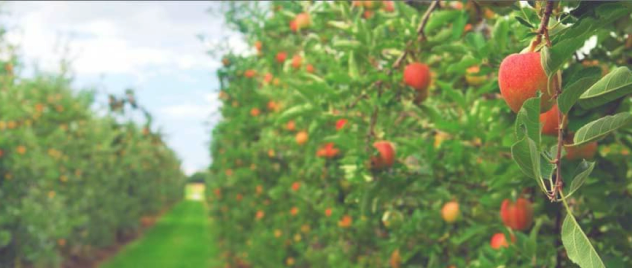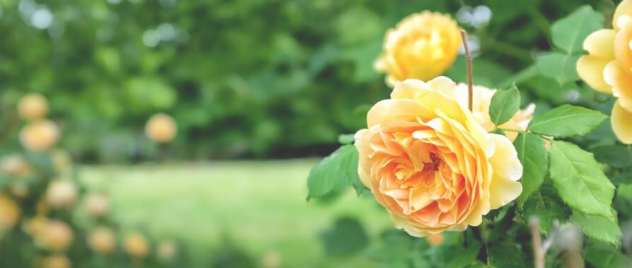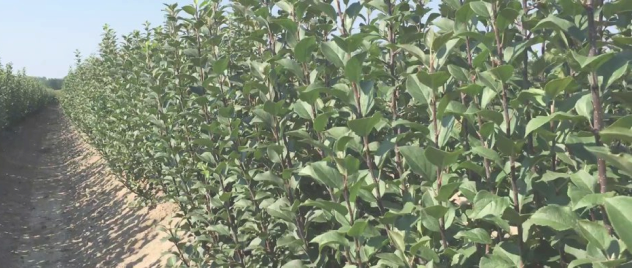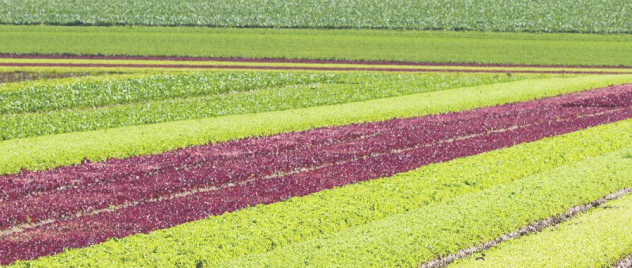APRICOTS
Apricot is a continental fruit and belongs to the Rosaceae family. It is believed that this fruit comes from Central Asia and northeast China. According to taste, appearance, and quantity of sugar, apricot fruit is a first-rate stone fruit and more than suitable for various types of preservation, processing, drying, and making various juices, jams, marmalades, jellies, and compotes. The seed of the fruit is also used, mostly as a substitute for almonds, but is also widely used in other parts of the food industry. The apricot fruit and seeds have great medicinal properties that affect its increasing demand in the pharmaceutical industry.
APRICOT
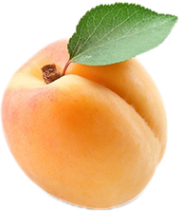
ROOTSTOCKS
PRUNUS CERASIFERA (PRUNUS MYROBALAN)
A seedling rootstock used for European plum and apricot production. Widely compatible with most cultivars. Suitable for various soil conditions. A semi-vigorous to a vigorous rootstock. Trellis is recommended for the first few years, but not necessary. The trees are hardy and vigorous, long-lived, and standard sized. Trees start bearing 4 to 5 years after planting.
TRAINING SYSTEMS
PALMETTE
This system consists of a main central leader, and 3-4 or 5-6 levels of side-branches depending on the rootstock. Side branches are grown left and right of the trunk and at angles from 55°-70° going from bottom to the top. On the skeletal side branches, the fruit-bearing branches are formed. After planting, in spring, the tree is cut to 70-80 cm from the ground. During the 1st vegetation, when the shoots reach a length of 8–10 cm, the top one is chosen for the extension of the leader, and the two that have a favorable arrangement are chosen for the first floor of the side branches. Other shoots 10 cm below the extension are removed or pinched and also the shoots that have a sharp angle are removed or pinched. The distance between the side branches ranges from 8 to 10 cm. Branches that will not be used for the shoulder branches and extension are bent. At the beginning of the second vegetation, the extension can be shortened to the height of the next floor of the branches. If the young branches have grown enough to form the second floor, they are formed, and if they are not, then this is done during the vegetation when they grow enough. In the case of apricots, we can usually leave the extension without shortening, from the formed young branches the most favorable branch is chosen for the formation of the second level of skeletal branches. During the vegetation, three shoots are selected again for the second floor and extension, and secondary branches are also formed on the first level side branches. Secondary branches are left at a distance of 30 to 40 cm from the extension, and the distance between the secondary branches should be 10-20 cm. The distance between the first and second levels of side-branches is 40-60 cm. The same procedure is done in the third year, and if desired in the fourth, depending on how many floors we want to form. The distance between the floor branches depends on the distance between the rows. The height of the crown should be 80% of the distance between the rows.
SLENDER SPINDLE
This system is used for intense, high-density orchards. It consists of skeletal branches in a horizontal position, spirally arranged around the central main leader. Height of the tree formed in this way is around 2.5-3.0m. In the forming period thinning cuts are performed rather than pruning cuts to allow the tree to go into the yield sooner. The pyramidal form of the crown is forced to allow for the light to penetrate through the whole crown. This system is more superior to the palmette as it allows the best yield results per hectare. It is characteristic of this cultivation form that the central extension is not shortened during the formation. On the central leader, the fruit earring branches are formed freely, without a specific arrangement. Their length is regulated by constant cutting above the shoots closest to the leader, which prevents the growth of the carrier of the fruit bearers and distancing of the fruit from the central leader. Because of the aging of branches that carry fruit bearer branches, the tendency is to move the fruit-bearing branches more to the top during the passage of time as a replacement for the lower branches. This system is formed during the first 3 years of vegetation and the technique is usually as for the other trees.
See our full SELECTION of APRICOT TREES we have in our offer
NEW JERSEY
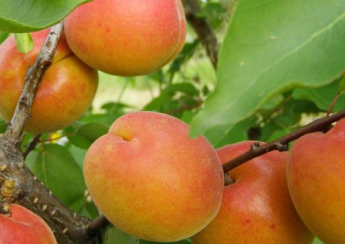
TREE:
A medium vigorous variety with abundant yields. It flowers early.
POLLINATORS:
Self-sterile.
FRUIT APPEARANCE:
Rounded in shape. The skin is bright yellow-orange, the flesh is medium-firm, golden yellow in color. The pit is easily separated. Juicy, aromatic, and sweet-sour in taste. Generally, the fruit of great quality.
FRUIT SIZE: Medium-large to large fruit.
HARVEST:
Achieves complete ripeness from late June to early July. As it tends to fall off the tree as it ripens, it is recommended to pick them when medium ripe (when the skin starts turning green to yellow).
COMMERCIAL USE:
Fruit of very high quality. Perfect for the consumer market. Also used in the food processing industry.
HUNGARIAN BEST
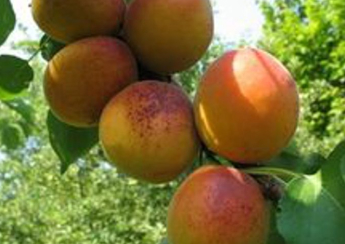
TREE:
A medium vigorous to vigorous variety, with abundant yields. Resistant to lower temperatures. It is flowering lately. Thrives best in sunny places.
POLLINATORS:
Self-fertile but gives maximum results when planted with another variety.
FRUIT APPEARANCE:
Round to oval in shape. The skin is yellow-orange with red blushes and red spots. The flesh is dark red, sweet to sour in taste and firm but juicy in texture.
FRUIT SIZE: Medium-large to large.
HARVEST:
Mid-July.
COMMERCIAL USE:
Abundant and quality yields. Excellent for fresh consumption, widely used in the processing industry.
NOVI SAD’S EARLY
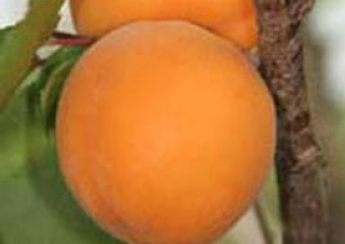
TREE:
A medium vigorous tree with good resistance to winter frost and mildly sensitive to spring frost and drought. Yields are abundant.
POLLINATORS:
Self-fertile.
FRUIT APPEARANCE:
Orange base color with abundant red blushes. Flesh is orange in color, juicy, sweet to sour in taste. Very attractive appearance, and overall good quality fruit.
FRUIT SIZE: Very large.
HARVEST:
Second half of July.
COMMERCIAL USE:
Attractive, with great yields, and overall good quality of the fruit. Used for fresh consumption and also used in the fruit processing industry.
NOVI SAD’S NATIVE
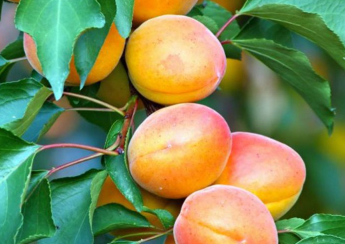
TREE:
A medium vigorous tree that yields abundantly. Crown forms as a wide sphere, and it is recommended to do regular pruning. It is flowering lately, a few days after Hungarian Best. Starts yielding early after planting and is a regular bearer.
POLLINATORS:
Self-fertile.
FRUIT APPEARANCE:
Shape is rounded to oval and a bit flat from the side. The skin is of a light orange color with a red blush on the sunny side. The flesh orange and juicy, with an exceptional sweet-sour taste.
FRUIT SIZE: Medium to very large fruit.
HARVEST:
Mid to late July.
COMMERCIAL USE:
Attractive and good quality fruit. Excellent for fresh consumption and widely used in the fruit processing industry.
ROXANA
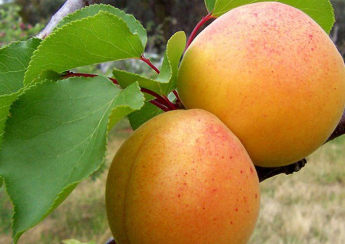
TREE:
A medium to high vigorous variety. When it starts yielding, it is a regular yielder. Flowering is mid-early.
POLLINATORS:
Self-fertile.
FRUIT APPEARANCE:
Round, elongated in shape. The skin is blushing red on the sunny side over an orange base. Intensely dark orange to red flesh. Firm, juicy, with an exquisite taste. Overall great quality.
FRUIT SIZE: Large.
HARVEST:
Late July to early August.
COMMERCIAL USE:
Excellent when consumed fresh as well as for processing. It handles transport excellently.
BERGERON
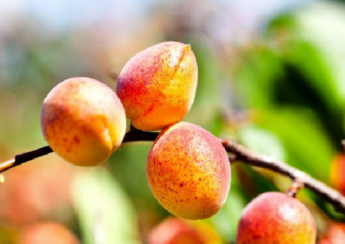
TREE:
The Bergeron apricot tree is a medium-sized tree with a spreading growth habit. It forms a well-rounded canopy with moderate vigor. It blooms in early spring, typically in March or April, depending on the climate. It is known for an early harvest, and its reliable and abundant yields.
POLLINATORS:
A self-fertile variety.
FRUIT APPEARANCE:
Bergeron apricots have a round to slightly oblong shape with a smooth and velvety skin. The skin color is a vibrant golden-yellow with a slight blush of orange on the side exposed to the sun. The fruit is medium-sized and has a firm yet juicy texture. The apricot flesh is golden-orange in color, offering a sweet and slightly tangy flavor. It is known for its aromatic qualities and delightful balance of sweetness and acidity.
FRUIT SIZE:
Bergeron apricots are typically medium in size, although the size can vary depending on growing conditions.
HARVEST:
Bergeron apricots are usually ready for harvest, typically from mid July, but it can vary depending on the growing region and climate.
COMMERCIAL USE:
Bergeron apricots are highly regarded for their exceptional flavor and versatility. They are excellent for fresh consumption, offering a delightful burst of sweetness with each bite. These apricots are also ideal for processing applications, including jams, preserves, desserts, and baked goods. Their attractive appearance, aromatic flavor, and juicy texture make them a sought-after choice for both home gardeners and commercial growers.

